As I enter the last two months of my year away and contemplate a return to the West, I have started to give thanks. That sounds banal but I think that on the whole westerners don’t realise how lucky they are.
We take services such as running water and drains as a given and when you have spent as much time as I have looking at rural toilets in India and teaching children how important it is to wash their hands, you realise that for the majority of people in the world this is not the case. In Cambodia there is no fully functioning sewage treatment system, so as we enter the rainy season and the storm drains flood and septic tanks overflow, the streets fill with contaminated water and the risk of bacterial gut infections rises. The water out of the tap is not potable and drinking water is bought in. I have got used to carrying round a bottle of water with me all the time but how wonderful to just turn on the tap and drink the water, to flush the toilet and not worry about the consequences!
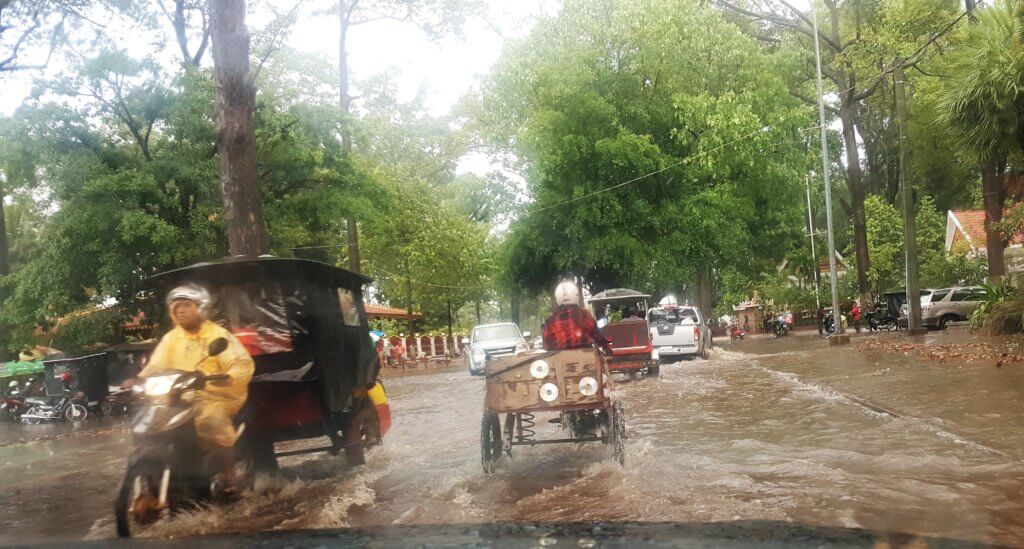
One of the basic needs of a human being is food and that includes water. The staple diet in Cambodia is rice and rice growing is central to Cambodian rural society. As 90% of the Cambodian population live in rural areas and are subsistence farmers, the success or failure of the crop determines whether people have enough food to eat. Staying above the poverty line is not easy as the harvest is dependent on climatic conditions. The poverty rate in Cambodia is falling but 70% of the population still live on less than $3 a day. I was talking to an Australian volunteer, working in a rural primary school, just north of Siem Reap. They provide breakfast for the kids coming to their school and for some, this is their only meal of the day. In comparison, I once experienced the food choice “overload syndrome” after a couple of years working in Africa and returning to the UK; in a supermarket in Tunbridge Wells I wanted to buy some pots of low fat natural yogurt – I was confronted with a huge display cabinet of different yogurts and I had no idea what they all were, I simply had to walk away empty handed, unable to select what I wanted. But what does this mean? We are so spoilt for choice, from buying the raw ingredients to cook for ourselves, to selecting a £10 “dinner for two” Chinese take away. We eat too much and as a consequence are suffering the consequences of obesity and associated health problems. You don’t see too many overweight West Bengali or Cambodian farmers. I am forever grateful for having food on the table and have vowed to get down to my recommended NHS BMI weight.
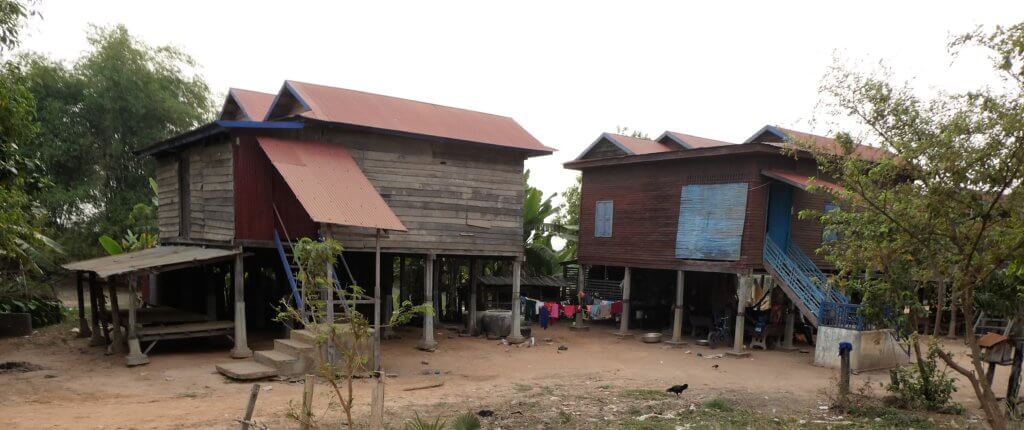
The second basic need is shelter and I thank all the gods that I have managed to keep a roof over my head despite the vagaries of stock market crashes, buying and selling property overseas at the wrong time, separation and other delightful financial constraints. I have a solid, brick-built house, the roof of which doesn’t leak and the toilet is inside so I don’t have to traipse outside in the middle of the night. It’s not at risk of seasonal flooding. I don’t have to walk miles in search of firewood to cook and heating is at the touch of a button. Rural houses in Cambodia and India vary in their construction; they used to be timber-framed affairs, raised on stilts in Cambodia to avoid the monsoon floods, with palm or banana leaf thatching on the roofs and walls. More and more houses are being built of brick and concrete these days with tin roofs – the noise when the rain pours down is deafening. Drainage of rainwater is an issue and important when we consider vector control measures. A lot of villages become extremely muddy in the rainy season and with so few tarmac roads, travel is difficult and roads often impassable.
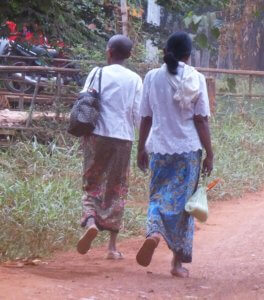
The third basic need is clothing. In India I spent most of my time in West Bengal in North 24 Parganas District and not in the Himalayas as planned, so I had to have a rapid change of wardrobe and adopted the long kurta and cotton leggings worn by local Indian women. These garments have served me well both in India and Cambodia. In Cambodia the traditional dress is called the sampot which is like a sarong, and many men and women in the rural areas still wear it. Women have also opted for the floral pyjama set and can be seen out and about in the markets and fields in brightly coloured PJs. They look wonderful.
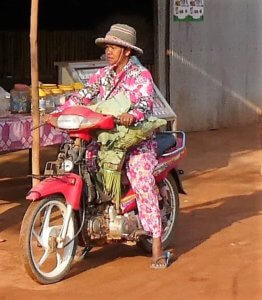
I have been asked by my manager to donate any clothes that I am not taking home with me to people in a poor rural village. I readily agreed but assured him that most of the clothes that I would be leaving behind were “well worn” but he assured me that they would be useful and received with thanks. A sobering thought.
Healthcare and education are two other human needs considered to be vital to lift people out of poverty. I have already talked about education in an earlier blog – http://overthehils.com/index.php/2018/03/08/teaching-english-in-cambodia/. Trying to explain the NHS, National Insurance contributions and unemployment benefit to my English language students is interesting. There are various contributory schemes in Cambodia for healthcare but nothing for unemployment benefit. Thankfully, I am benefitting from state and work pensions that I contributed to, so have some reward for my years of labour. The pension schemes in Cambodia are in their infancy – civil servants and veterans receive pensions and pension reform for the private sector is in the pipeline. People still rely on the family network to support them in hard times.
I have benefitted from a good education, employment, the ability to travel and not known poverty or hunger. I am eternally grateful that I have been given these opportunities and realise what a privileged position I am in. Many friends have asked what my next adventure will be and I have replied that I need to get home to running hot and cold water, a source of electricity which doesn’t spark every time you plug in an appliance and not having sweat dripping off my nose and chin permanently before I contemplate my next move. As I sit writing, the power has gone off for the umpteenth time this month, the fan has stopped – I can feel the perspiration forming on my brow…
©Copyright overthehils.com 2018
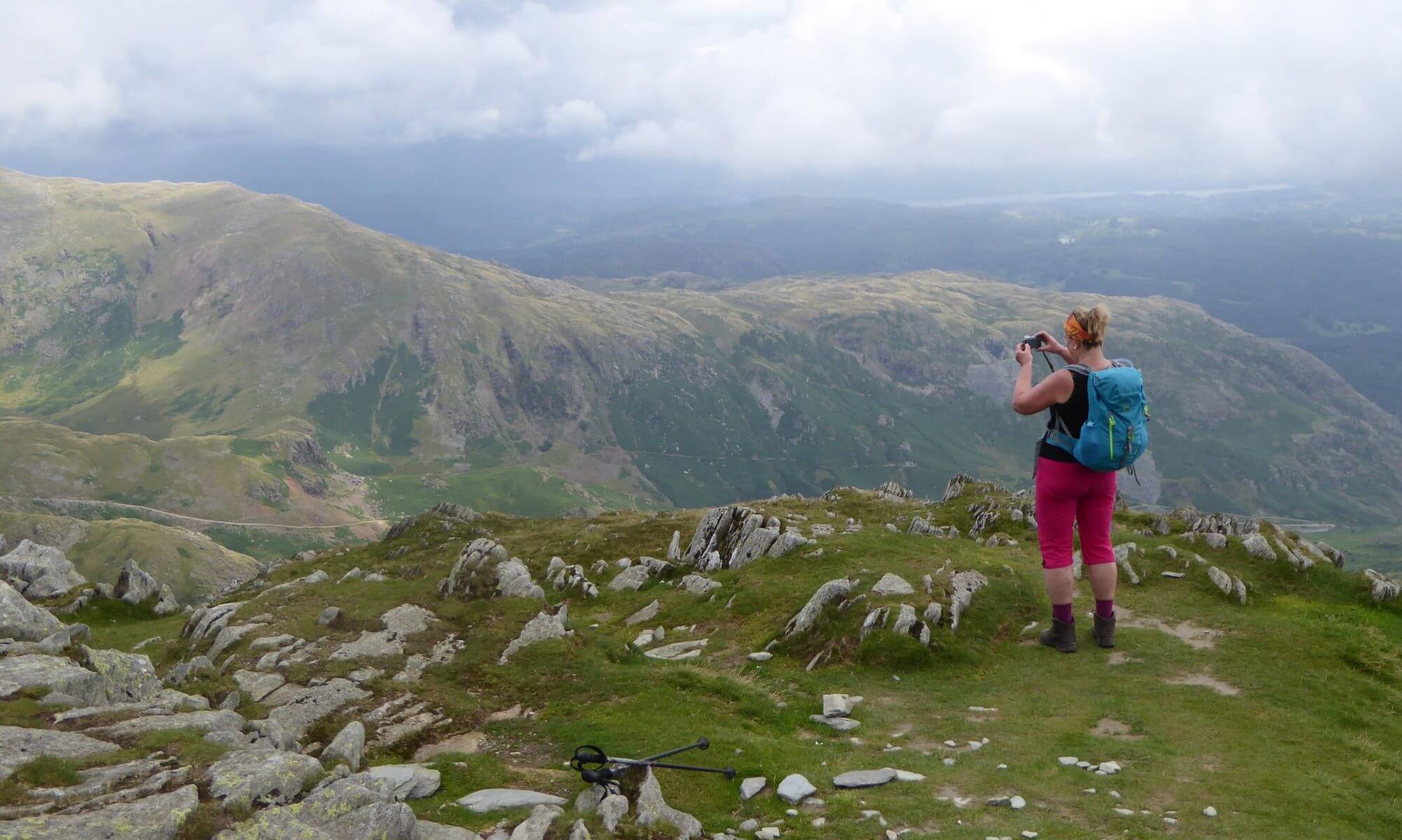

Another excellent read with so much food for thought. It will be a shock when you return home. I am finding it harder and harder to deal with the choices on the shelves, without living away from it for many months!
Thanks. All pretty obvious stuff but I just felt it had to be said. We are very fortunate people.
Thank you Hilary.
Thank you for reading x